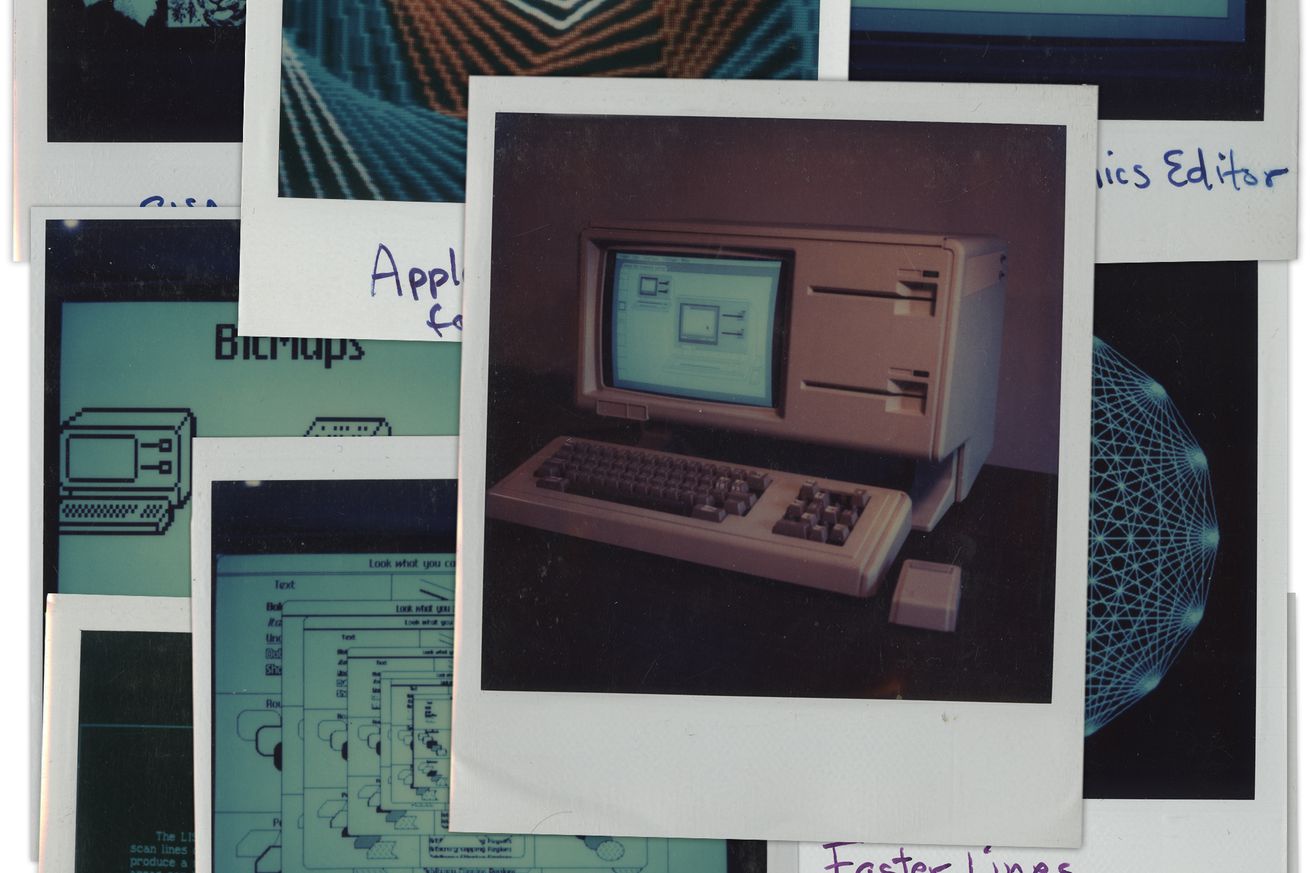
Lisa’s Family Photos
Apple’s legendary Lisa computer was a flop by commercial standards, but its influence on computing can’t be understated. In the 40 years after its debut, ideas from the Lisa changed our relationship with computers – influencing their design to be more human-centered. If you’re reading this on a computer screen, your experience has probably been shaped in some way from the lessons forged by the Lisa.
Today, in partnership with The Computer History Museum, we’re excited to share another part of what makes the Lisa feel, well, human: a selection of exclusive Polaroid photos from the Lisa’s development taken by Bill Atkinson, the designer and developer of the computer’s graphical user interface. Atkinson sat down with CHM for an interview about his time at Apple and offered a tour of his photo album. We’ve chosen some of our favorite photos from the collection alongside selected remarks from Atkinson’s interview.
In this collection, you’ll see a rare look inside the development of one of the most important computers ever made – from experiments with 3D graphics to cutting-edge UI designs. We take all of these things for granted now, but at the time these photos were taken, the camera was capturing things few human beings had ever seen. It’s hard to imagine this scene at the finely-orchestrated Apple campus of today, but at the time of the Lisa, Atkinson worked on the project at home and drove his Polaroids over on a motorcycle to share progress with the rest of the team.
Steve Jobs once famously said “we’re here to put a dent in the universe. Otherwise why even be here?” Atkinson says this kind of energy drove him to Apple when Jobs recruited him and his friend Jeff Raskin invited him to visit the company. “I said no way,” Atkinson told CHM. But his resistance to the idea was short-lived. “I was working on a PhD in neuroscience, and he sent me roundtrip airfare and my dad lived nearby in Los Gatos, and so I figured what the heck, I’ll spend a weekend.”
“Well, Steve spent the entire day with me, and what he said then is what fired me up” Atkinson says. “[Steve] said: what you read about in tech news really happened two years prior. There’s a lag time between when something’s invented and the time something’s available to the public. If you want to change the world for the better, you have to be ahead of that lag. And then he gave me a visual. He said: think how fun it is to surf on the front edge of a wave and how not fun it is to dog paddle on the tail end of the same wave. Come to Apple and you can change millions of people’s lives.”
“Literally two weeks later, I had quit my PhD program. I moved down to Silicon Valley from Seattle, and I was working at Apple Computer. I knew right from the beginning that what we were doing was gonna change the world in a good way.”
“Without Lisa, there never would’ve been a Mac.”
3D Graphics




3D Graphics
“While we were developing the Lisa user interface at my home I had a Lisa prototype, and this consisted of an Apple II with a graphics card that put up a display that was the Lisa bitmap display. I would write code that would display on it. We could look at the possible user interface feature and I would take a picture of it with my Polaroid camera. At that time, I was riding a motorcycle and would drive it into Apple and meet with other people to discuss user interface possibilities.”
Graphics Editing




Graphics Editing
“Sketchpad was just a test bed for quick draw. It was never an application that shipped. It later evolved into Mac Paint. It was a tip of the hat to Ivan Sutherland. His first graphics editing program was called Sketchpad, and I was a fan of his work.”
Images



Images
“I had a Western Union desk facsimile machine that I had Jeeped up. It would make a remote copy of an image, but I modified it so it gave an analog signal, and made an analog to digital converter… so I could scan images with it. This is before Apple had a scanner. One of my pet hobbies was: how do you make grayscale from black and white pixels?”
Type





Type
“This one shows the first characters on Lisa. These are hand-built, proportional font. Remember on the Apple II, every character was the same width. And here was our first example of an ‘i’ being narrower than a ‘w’, that we take for granted today, but we didn’t take it for granted back then.”
UI








UI
“We had a confusion about folders and documents. So here is a folder with a menu at the bottom, well, a folder. We think of a folder now as a container that other things go inside of. And a document is something you actually write on. But we were confused about that at the time.”
“These represent sort of incremental documentation of the way we blundered into the Lisa user interface. It was not just created de novo, it was iterated, it was hard engineering, trying stuff on real users and finding out what they don’t understand. Fixing bugs, user bugs, until it worked more smoothly. The way you get a smooth user interface is with user testing. There’s no other way.”
Just Cool Stuff






Just Cool Stuff
“I think it made a difference that Lisa made the computer accessible to more people. Unfortunately, it was too expensive. It was the stepping stone that allowed the Mac to become and later the iPhone and the iPad. If Lisa hadn’t been there, [the iPhone] wouldn’t have been there.”

